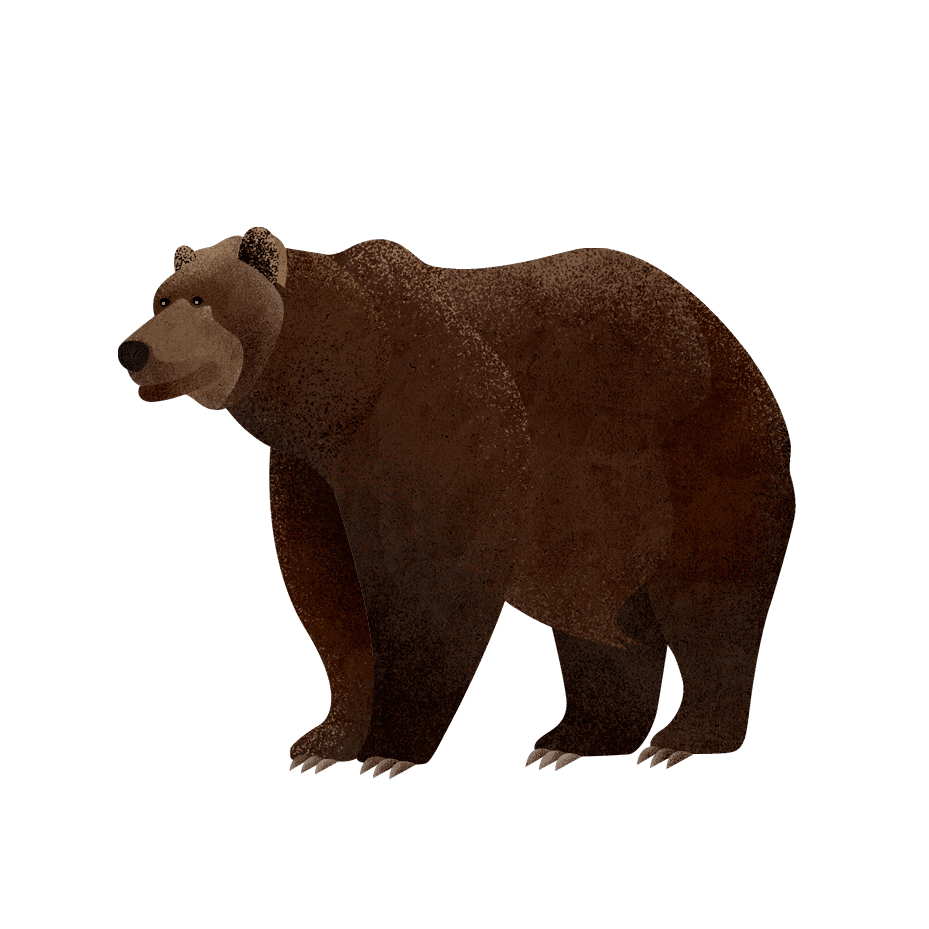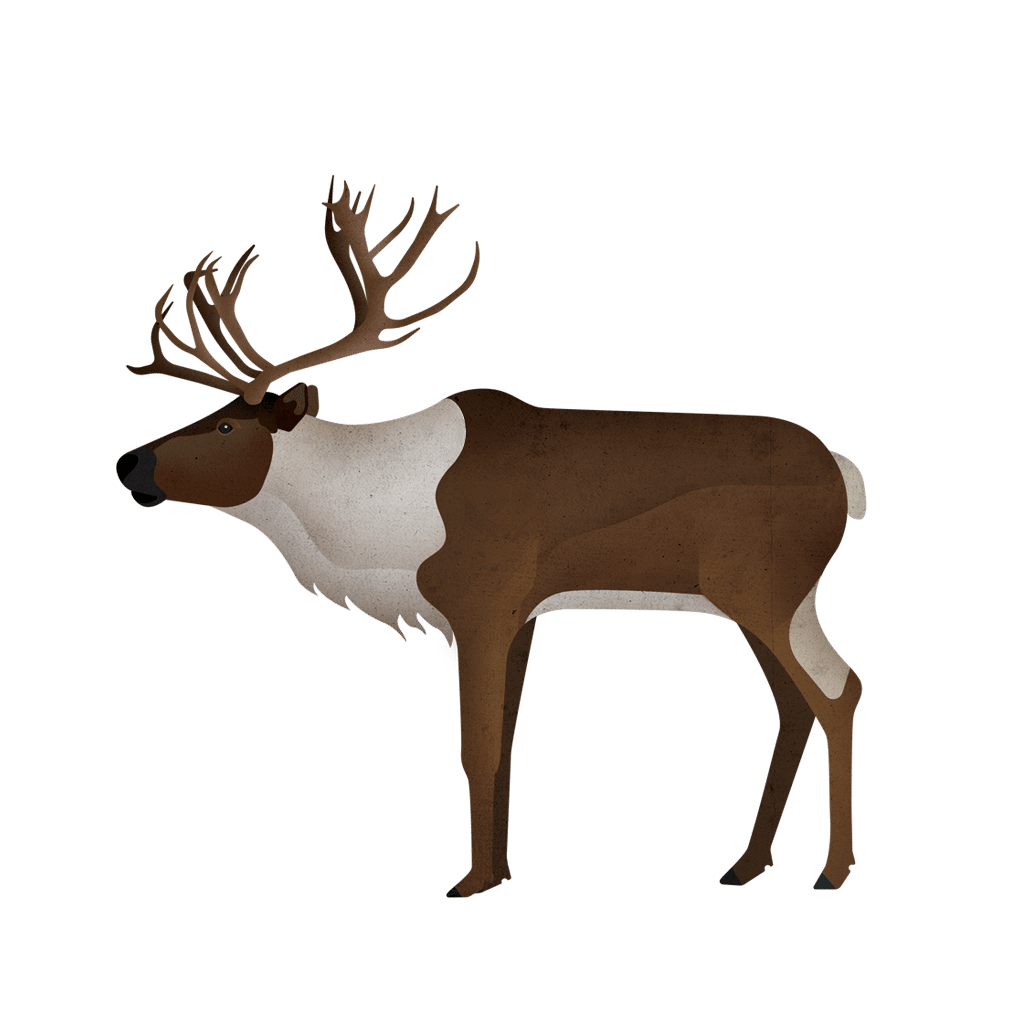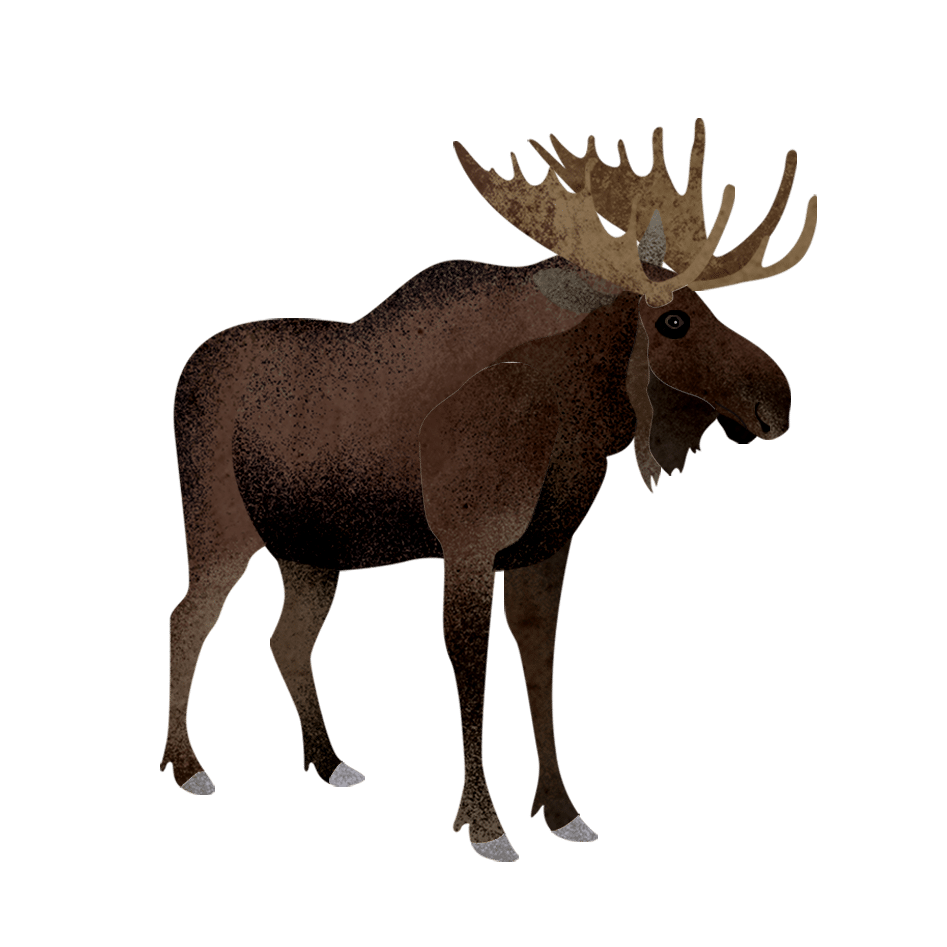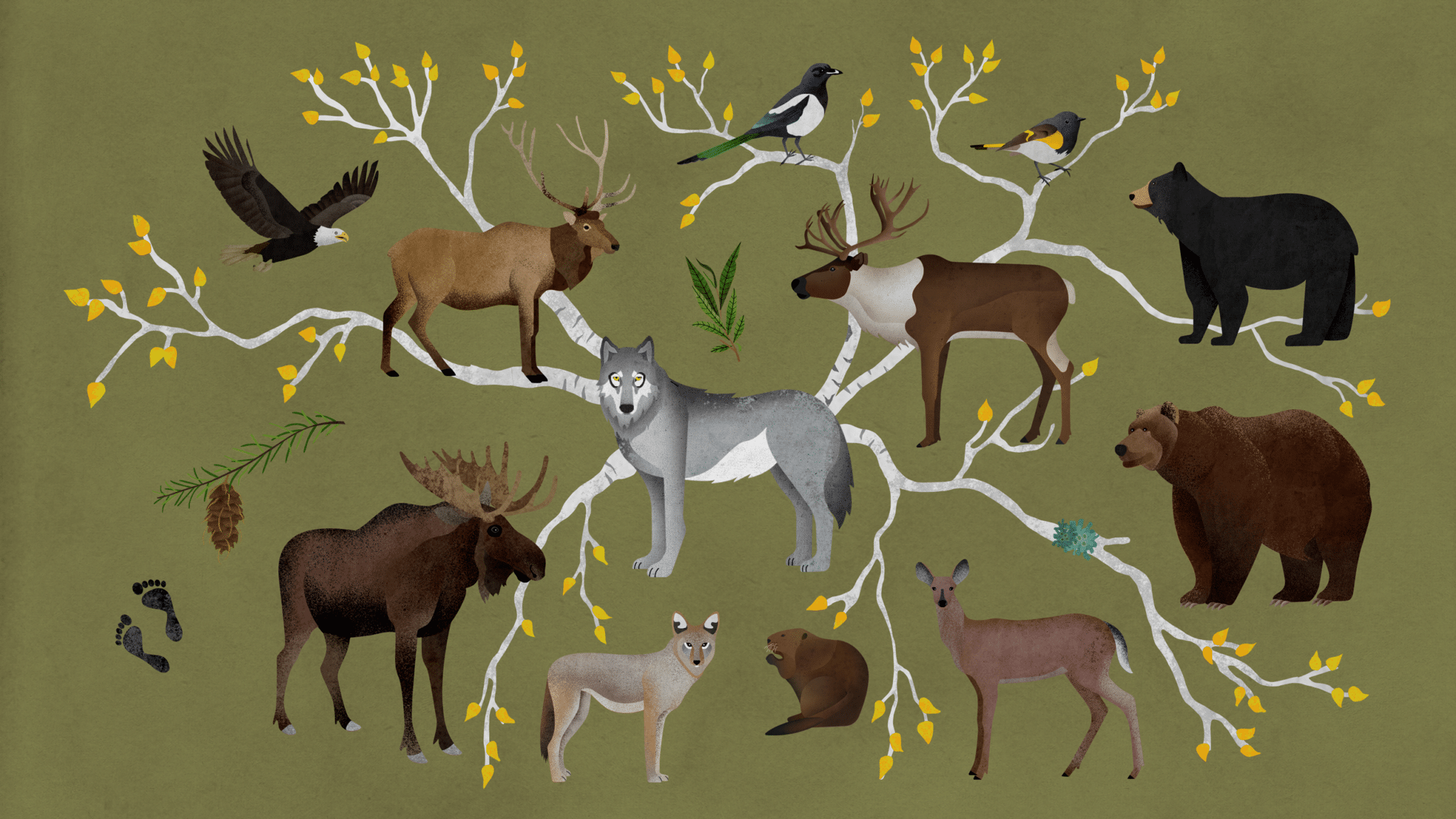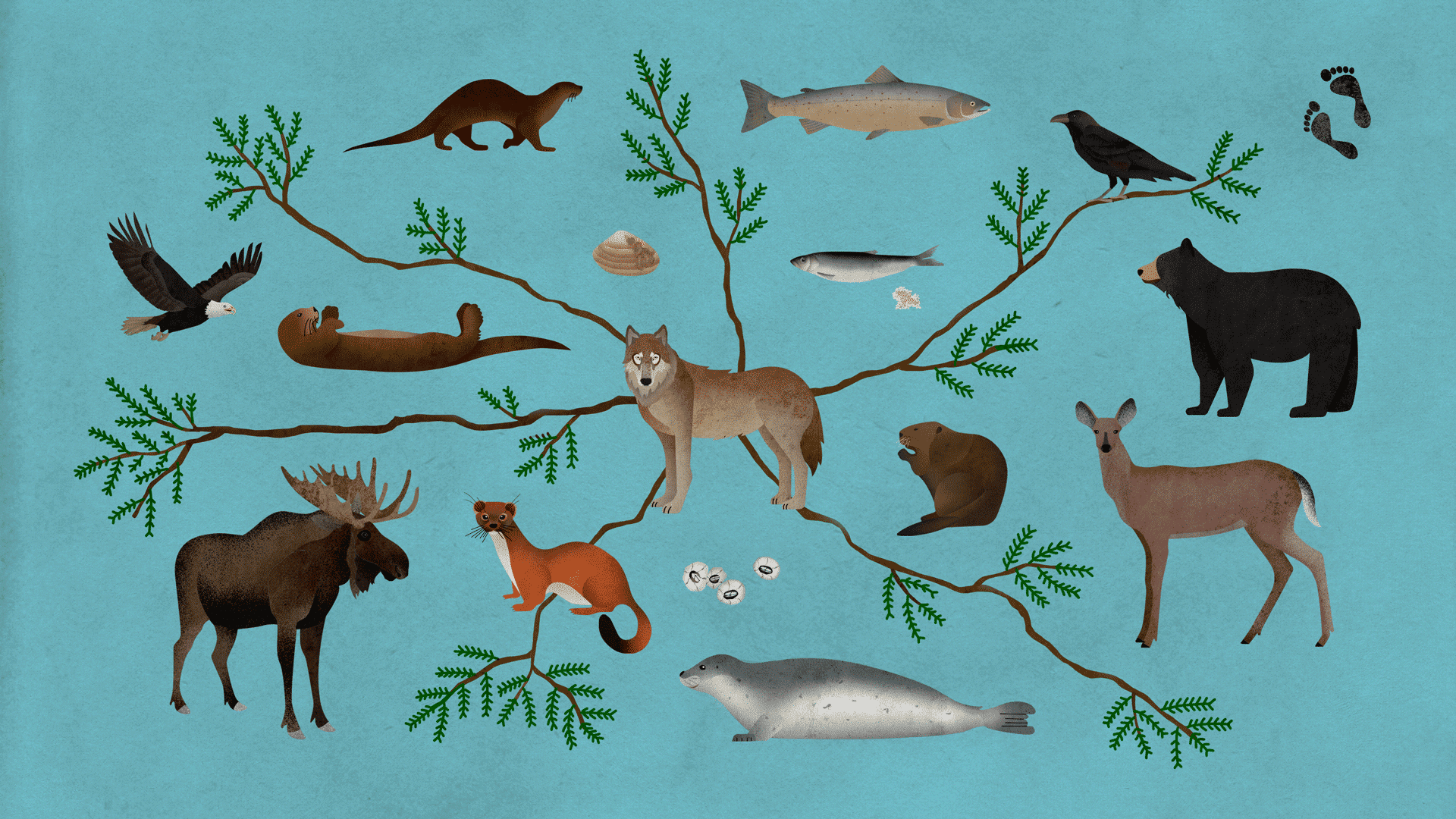
Ecosystems are made up of a complex web of relationships between plants, animals, fungi and bacteria. Food chains are one important type of these relationships and there are many overlapping food chains in an ecosystem making up the food web. Wolves are an apex predator that occupy the top niche in the natural food chains they occur in; as such, they are not hunted by any other species within the chain for food.
Changes in a food chain can have ripple effects across the whole ecosystem and broader food web. For example, inland wolves often hunt deer which graze on grass and young shrubs. Through their connection with deer populations, wolves affect the vegetation and other characteristics of natural landscapes by changing the dynamics of other species in their ecosystems.
Wolves have a varied diet which changes depending on the landscape they inhabit. Today, wolves can be found in diverse environments, including mountain areas, tundra, woodlands, deserts, grasslands, forests and coastal areas. Across these habitats wolves have a notable impact on biodiversity and biomass in the areas they occur. In British Columbia (B.C.), ecological factors have driven a dramatic wolf differentiation between two genetically distinct populations: interior wolves and coastal wolves. In both coastal and interior regions of B.C., wolves play a key role in ecological processes as a keystone species that helps maintain a healthy natural system.
Wolves Affect Interior Habitats
In top-down controlled ecosystems, the populations of the organisms in lower trophic levels (birds, small mammals, ungulates etc) are controlled by the organisms at the top, the predators. As a keystone species and apex predator, wolves apply top-down pressure to the ecosystems they inhabit, initiating interactions that can control entire ecosystems. Known as a trophic cascade, this phenomenon can occur when wolves limit the density and/or behavior of their prey, enhancing the survival of the next lower trophic level and so on.
Left unchecked, ungulate species like deer, elk and moose can reduce the diversity of life in forests and riparian areas, lower native plant richness and abundance, benefit some invasive plant species and affect river systems. In turn, this has a domino effect throughout the ecological community. When wolf populations recover or are reintroduced into areas where they have been removed, their presence can have profound effects on a wide diversity of plant and animal life as they reinstate top-down pressure to the ecosystem by eating ungulates.
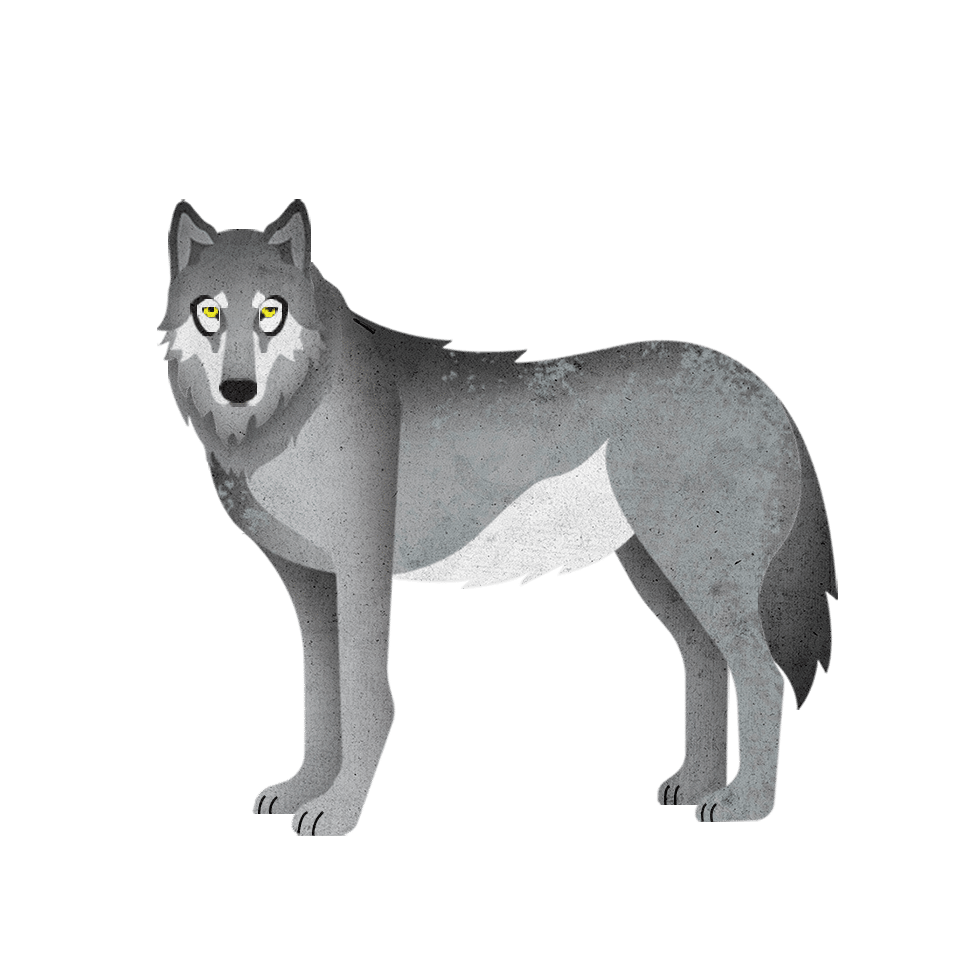
Concept corner: What is a keystone species?
A keystone species is a species that has a disproportionately large effect on its natural environment relative to its abundance. They help maintain biodiversity in the community in which they live.
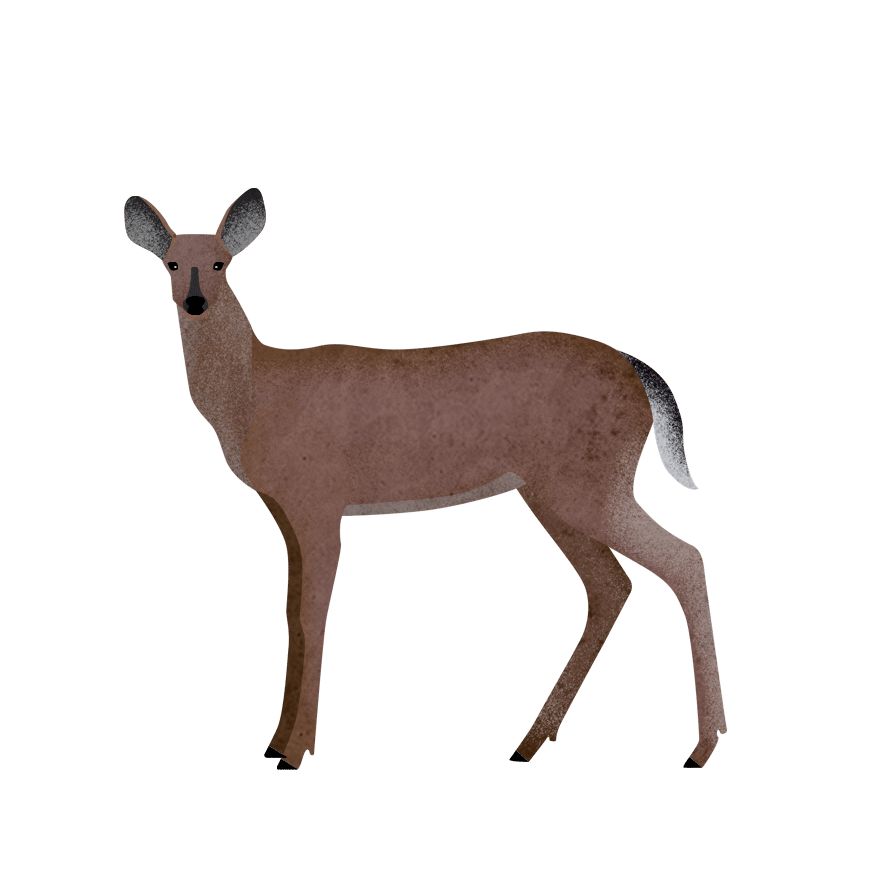
Concept corner: What is a trophic level?
Organisms in food webs are grouped into categories, called trophic levels, based on their feeding behaviour. Trophic levels include producers (plants), consumers (herbivores, omnivores, carnivores), and decomposers (like fungi and bacteria).
Interior Grey Wolves Ecosystem Wheel
Hover over the magnifying glass to learn about a species’ role
Design Credit: Pooja Gupta
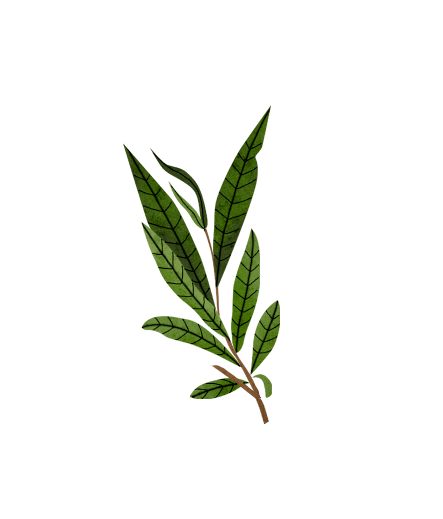
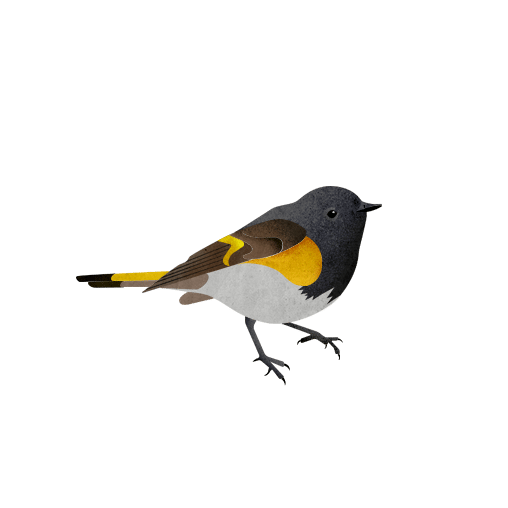
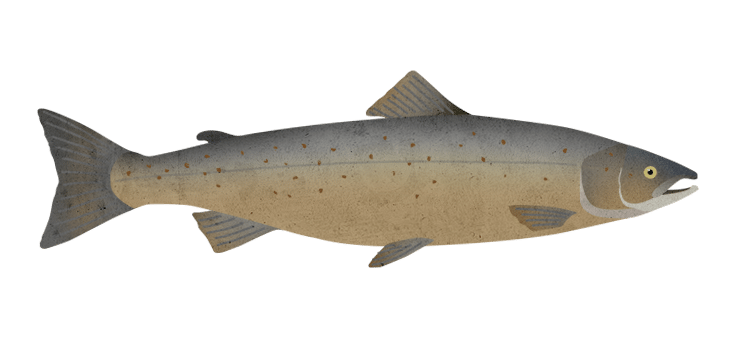
For example, In Olympic National Park (Washington State) an overabundance of elk has damaged the rainforest ecosystem and has likely caused substantial changes in riparian plant communities, leading to riverbank erosion and channel widening, thus reducing rearing habitat for salmon, steelhead, and other fish species. The extermination of wolves in similar regions, which left elk populations unchecked, set off a cascade of changes affecting forest vegetation and stream dynamics. In some areas where wolves have disappeared, forest vegetation and biomass decreased, became less diverse, and plants rarely reached maturity before being grazed. As a result, soil and fine sediments along stream beds which would have otherwise been held in place by the forest root system, eroded away, changing the form and flow of rivers. Several fish species, like salmon and trout rely on gravel free of fine sediments to be able to spawn effectively. Wolves were exterminated in the early 1900s from Olympic National Park, and many of these similar vegetative and stream dynamics have been observed there.
Conversely, in Yellowstone National Park the reintroduction of wolves led to an increase in vegetation, primarily willow and aspen trees, by limiting browsing pressure on vegetation by elk. Following the reintroduction of wolves to the landscape, there were approximately double the sapling densities of aspen trees in areas with higher wolf presence than in areas with persisting lower wolf presence. In addition, the grazing intensity and removal of willow trees is, on average, seven times higher in areas with lower wolf presence than in areas where wolves thrive. The more wolves in an area, the fewer elk there were and the more aspen and willow trees were able to grow and mature. The increase in tall willow heights, greater canopy cover, newly vegetated streambanks, and the recent development of inset floodplains helped to initiate the recovery of riparian plant communities and stream channels as ecosystems were left to mature and develop in the absence of overbrowsing by elk.
Additionally, by both supporting (via the recovery of riparian plant communities and stream channels) and controlling populations (via predation) of beavers, wolves may have a long-term impact on riparian ecosystems, wetland creation, and watersheds by generating diverse habitats and patchiness that help support many species across the landscape.
As plant communities recover from overbrowsing, the availability of usable habitat space and food availability for other species increases. For example, riparian songbird abundance and diversity approximately doubles in areas where wolves exist. In Yellowstone National Park riparian songbird species including the American redstart, Tennessee warbler, orange-crowned warbler, and least flycatcher are not detected in areas with low wolf density. Bird diversity and populations are a leading indicator of overall ecosystem health.
Depending on a wolf’s diet and habitat, the way it affects the ecosystem around it can be vastly different. Read more about the controversial management of interior grey wolves and caribou at cariboutwolves.org.
Wolves Affect Coastal Habitats
On the coast of B.C., sea wolves transport marine nutrients into the forest, similar to bears. During spawning season, wolves remove salmon from streams and rivers, transporting their carcasses far into the forest. Coastal wolves typically only consume the head of the salmon, leaving the rest to decompose and nourish trees or be scavenged by other species. Up to 80% of the yearly nitrogen budget for some trees in the coastal temperate rainforest is derived directly from salmon nutrients. Research has found that trees on the banks of salmon-bearing rivers grow more than three times faster than trees growing alongside a river devoid of salmon.
The control wolves exude on the landscape, largely through their relationship with prey species, has a complex and wide ranging effect across various trophic levels. This control can often be observed throughout the entire ecosystem and throughout each season in a unique way.
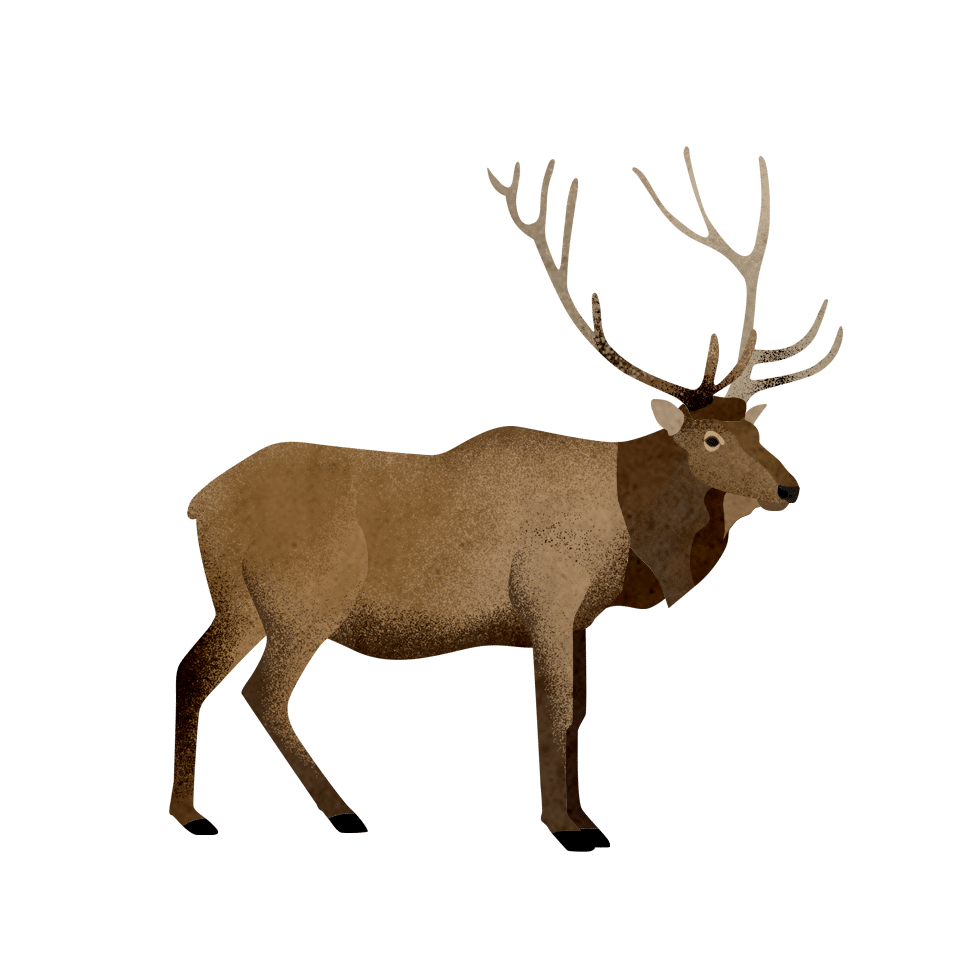
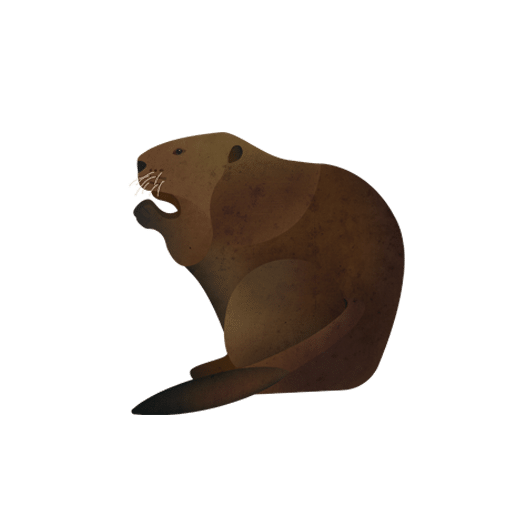
Concept corner: Beavers as keystone species
Beavers are a keystone species and ecosystem engineer similar to wolves. Beavers create new wetlands and ponds by building dams and lodges. These dams turn small streams into ponds and lakes which provide habitat space to a multitude of other species.
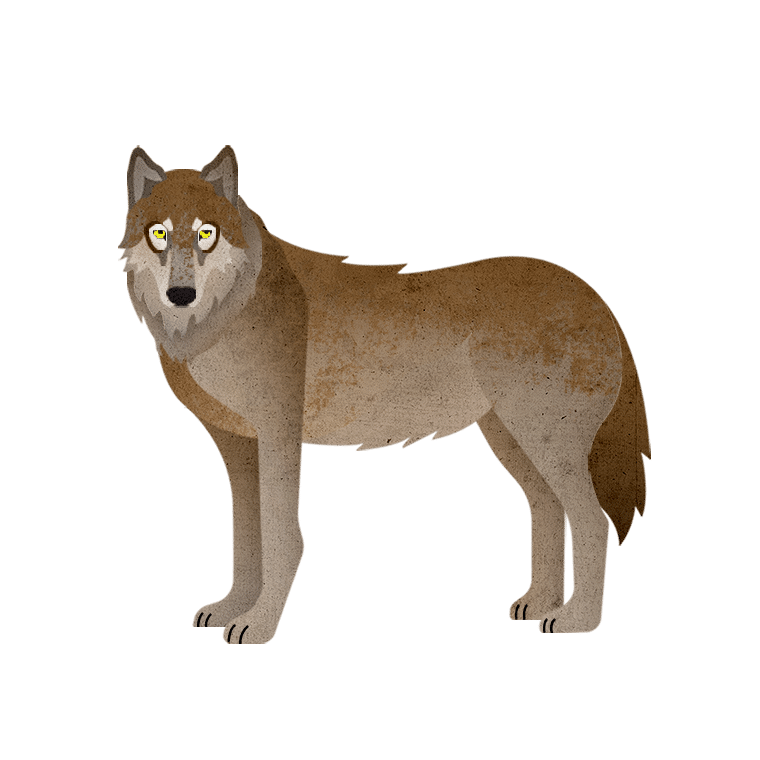
Concept corner: What is a marine nutrient?
Nitrogen-15 (15N) is a stable isotope of nitrogen and an essential plant nutrient. 15N has a very low natural abundance in the terrestrial environment. However, 15N is found naturally in the ocean and increases with each higher trophic level. Salmon, on the fourth trophic level, have elevated levels of 15N and bring this vital marine nutrient inland as they travel up streams to spawn.
Sea Wolf Ecosystem Wheel
Hover over the magnifying glass to learn about a species’ role
Design Credit: Pooja Gupta

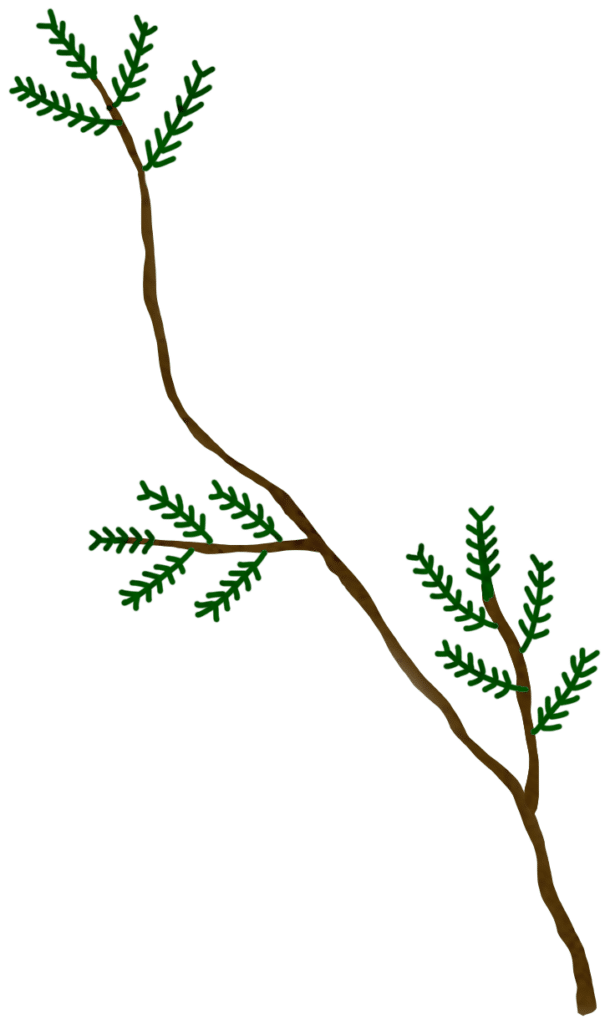
Wolves Affect other food chains
Wolves help to create conditions that support a more robust diversity of predators and mesopredators, by maximizing the niche spaces available in an ecosystem and controlling some mesopredator populations, like coyotes. In the absence of top-down control by wolves, coyotes (a prominent mesopredator) may be released and dominate the landscape, outcompeting smaller-still predators and lowering the overall diversity of the ecosystem. The reintroduction of wolves to Yellowstone National Park resulted in a 50-90 percent decline in coyote density throughout the park and reduced the size of coyote packs. A wide diversity of smaller mesocarnivores (such as weasels, marten, badgers, fishers, wolverines, red fox, lynx, bobcat, and otters) thus increase in population size as the competition and predation risk from coyotes declines.
At least 12 species of scavengers have been observed utilizing wolf kills for a source of food. Wolf reintroduction in Yellowstone National Park has increased the quantity and timing of carrion available to scavengers. In the wake of a warming climate, the number of elk killed by winter conditions in the park is decreasing. Scavengers that once relied on winter-killed elk for food are now dependent on wolf-killed elk to sustain themselves. Ravens, bald eagles, golden eagles, magpies, coyotes, grizzly bears, and black bears are frequent visitors at wolf kills and are highly reliant on carrion in winter months for survival and reproductive success. By providing a reliable source of carrion in winter months, wolves in Yellowstone are buffering the effects of climate change by allowing scavengers to adapt to change over a longer time scale more consistent with natural processes.
A healthy wolf population may also play a supporting role in maintaining a healthy population of other iconic, keystone species in B.C, like grizzly bears. By partitioning their dietary niche, wolves and grizzly bears have evolved to coexist and thrive alongside one another. Research indicates that wolves improve the availability and diversity of plant and berry food sources that grizzly bears rely on for survival by regulating population sizes of plant browsing animals, like deer, elk and moose.
As omnivores, a grizzly’s diet is made up of both plant and animal foods. In addition to enhancing the amount of vegetation available to grizzly bears, wolves also play an important role in supplementing their diet with meat. In the early spring, after den emergence, scavenging on wolf-killed ungulate carcasses is particularly important to grizzly bears in some areas. Bears will scavenge on wolf-killed carcasses year-round where their ranges overlap, and wolf presence may contribute to the proportion of meat within a grizzly’s diet where they share habitat space.
Wolves Affect Species Health
As a keystone species, wolves have a dynamic relationship with and influence on their various prey species. Studies have indicated that wolves can even contribute to the health of ungulate populations by weeding out sick animals and improving the genetic structure of breeding populations. The selection of individual prey takes place through a sorting process that includes wolves testing a herd, identifying weak individuals and pursuing the inferior animals as targets. Removing unhealthy, aging, and post reproductive-age individuals from the population helps to ensure that the younger, healthier and more fecund individuals have less foraging competition. Recent research indicates that wolves can substantially reduce the prevalence of both infectious and genetic diseases in caribou, deer, elk and moose.
Research suggests that wolves could substantially reduce the prevalence of chronic wasting disease (CWD) in deer and elk populations with more efficiency than hunting and culling by humans. Through the use of a mathematical model, this study predicted that selective predation by wolves would result in a more rapid decline and natural limitation of CWD in ungulate populations when compared to human-intervention efforts to control the spread of the disease. Although there has yet to be a field study to test this hypothesis, wolf predation has been shown to help control disease (tuberculosis) in wild boar in Spain. Wolf predation plays a key role in disease control without leading to an overall reduction in prey populations. Mortality due to predation is compensated by a reduction in mortality by disease and may even help to eradicate disease from prey populations naturally over time.
When hunting moose, wolves display strong selection preference for aging individuals and tend to avoid adults in their prime. Research conducted in Isle Royale National Park – an island cluster in Lake Superior, near Michigan’s border with Canada – shows that prey selection of moose by wolves may also be influenced by a chronic disease affected by genetic factors: osteoarthritis. In Isle Royale National Park, wolves tended to avoid healthy prime-aged moose or those with mild or moderate osteoarthritis, but would target prime-aged moose with severe osteoarthritis. These findings indicate that wolf predation may act as a selective force against the genes associated with developing severe osteoarthritis as a prime-aged adult in moose and displays how wolves naturally regulate healthy prey populations.
The impact of wolves on ecosystems is large relative to their population size within ecosystems. Recent research indicates that wolves may even affect the carbon balance in the regions they inhabit through their control of grazing species. The indirect effects of wolves on yearly carbon fluxes (via carbon sequestration of vegetation) are estimated to be comparable with the fossil fuel emissions of 6–20 million passenger cars per year. The global literature is clear, on a broad-scale, wolves overwhelmingly benefit the ecosystems that they inhabit, the species they share habitat space with and play an important role in regulating the natural balance.
For hundreds of years, the systematic extermination of wolves from the landscape across several continents has largely disrupted this balance. As wolf populations begin to recover in large areas across North America and recolonize areas they were previously extirpated from, public attitude needs to shift to align with the bulk of the evidence recognizing wolves as an essential part of a healthy landscape. To learn more about wolves and hear from the voices promoting human-wolf coexistence, click here.
Concept corner: What is mesocarnivore release?
A process whereby mid-sized carnivorous mammals become far more abundant in the absence of top-predators, like wolves. This can result in decreased populations of still smaller mammal species and prey species, like birds. Mesocarnivore release may lead to dramatic prey population decline, or even extinction, especially on islands.

